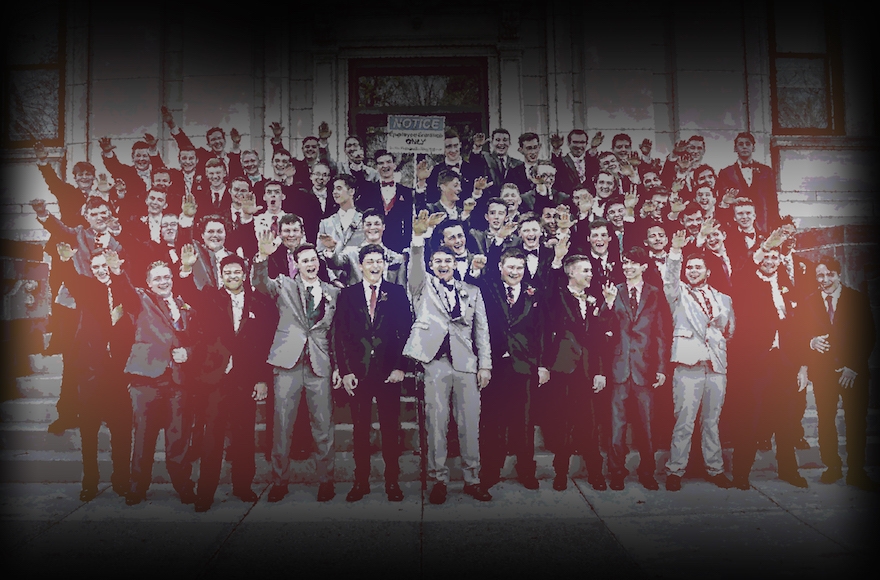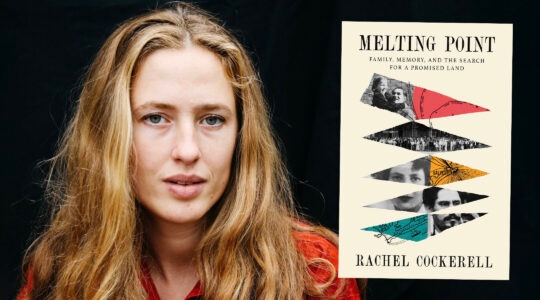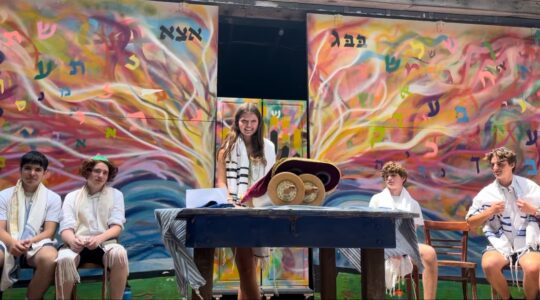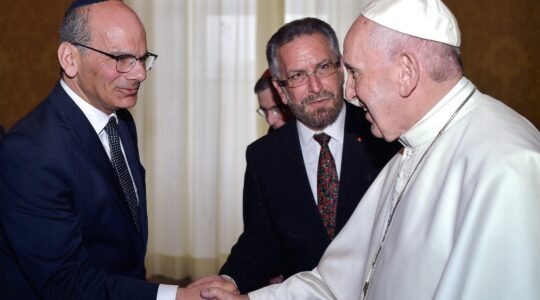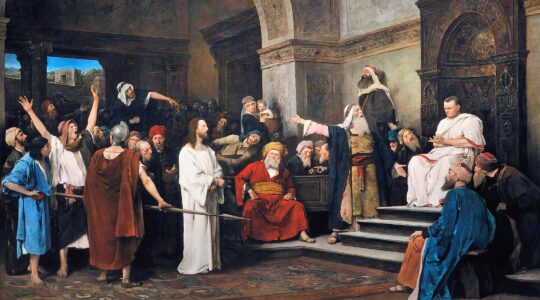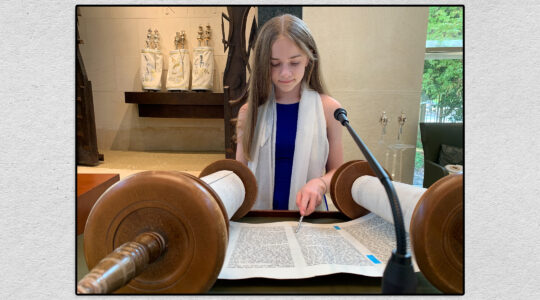Editor’s note: Last week, students at Baraboo High School in Wisconsin were seen in a photograph taken last spring in which they appeared to be giving the “Heil Hitler” salute. Although the photographer who took the photo on the steps of a county courthouse said the camera caught the boys in the middle of waving goodbye, one of the boys said on Twitter that the photographer specifically told them to make the gesture. Their behavior was condemned by Wisconsin Gov. Scott Walker, and district officials and police have launched an investigation.
Rabbi Laurie Zimmerman, a congregational rabbi in Madison, was asked to address the school on Nov. 19 and explain why the gesture is so offensive to Jews and others. The following is excerpted from her remarks.
MADISON, Wis. (JTA) — I’d like to share some thoughts with you about why an image of almost 60 boys taking part in a Nazi salute has been so disturbing. I have no wish to condemn or denounce the boys, and I assume that many of them did not understand the meaning of the Nazi salute, nor did they intend to harm anyone.
The first point I’d like to make is that while seeing the image of a Nazi salute has a particular effect on Jews, this isn’t just about Jews. This is about white supremacy.
White supremacy is an ugly ideology that affects us all. We are at a crossroads in this country – either we will become a country that honors and welcomes everyone in all their diversity, as we try to learn from each other and appreciate our differences, or we will become a country that even more staunchly privileges white, Christian people over everyone else; a country that even more firmly institutionalizes racism and in doing so disparages Jews, along with African-Americans, Latinos, Muslims, Native Americans, Asian-Americans, and lesbian, gay, bisexual and transgender people.
We are at a crossroads, and we must decide whether we are going to resist white supremacy or we are going to look the other way. It’s not just that the image caused great hurt in the community – it’s that the image is a manifestation of growing anti-Semitism, racism, xenophobia and Islamophobia in this country. Context matters. Hate crimes are increasing and hate groups are growing exponentially.
Just a few weeks ago we witnessed the killing of 11 Jews in a synagogue in Pittsburgh. Three years ago we witnessed the killing of nine African-Americans in a church in Charleston. Six years ago we witnessed the killing of six Sikh worshippers in a Temple in Oak Creek, Wisconsin. These were the high-profile shootings, but far too many acts of intimidation and violence are being perpetrated against immigrants, Muslims, transgender people and so many others. This should concern all of us. There cannot be healing until we acknowledge and confront the political climate in which we live.
The second thought I want to share is that Jews feel a particular sense of horror at seeing a Nazi salute. Our people were the primary targets of the Nazi genocide. A little over a week ago we marked the 80th anniversary of Kristallnacht, called the “Night of Broken Glass.” It was on this night that the Nazis destroyed 267 synagogues and over 7,000 Jewish-owned stores and rounded up 36,000 Jewish men. This marked the beginning of the Holocaust, the Nazi genocide of the Jewish people. The Nazis killed 6 million Jews, including 1.5 million Jewish children. Two-thirds of the 9 million Jews who had been living in Europe were dead.
Anti-Semitism is a complex phenomenon, but we cannot understand the reaction to the Nazi salute without trying to learn how anti-Semitism has affected Jews throughout history.
For Jews, the Holocaust isn’t just distant history. Most Jews have stories about family they lost. I know that I lost several relatives. But because of the chaos and devastation, I never learned their names. I know nothing about who they were or the lives they led – my parents have left me only with blank spaces on a family tree, a vague knowledge that there were so many loved ones who couldn’t get out of Germany.
The third idea I want to emphasize is that the Holocaust didn’t come out of nowhere. The Nazis drew on centuries of Christian anti-Semitism. They were able to accuse Jews of being the source of all problems facing the German people because Jews had become an easy scapegoat.
Jews had been persecuted by Christians for 2,000 years. In early Christianity, the Church wielded accusations that the Jews killed Christ. In the Middle Ages, Christians destroyed Jewish communities through widespread massacres in the Crusades. For centuries, different European rulers expelled Jews from their countries.
You can imagine how easy it was to target the Jews after so many centuries of persecution. So when Hitler accused the Jews of polluting Aryan blood, people listened. Times were tough and people needed someone to blame. While Jews had been living securely and were fully integrated into the societies in which they lived, the rise of Hitler led, very quickly, to their displacement and widespread persecution.
So where do we go from here, given that the photo has angered and hurt so many people, and there is a strong desire to heal the Baraboo community? I know that you will be discussing this at future gatherings, but I’d like to offer a Jewish response.
In Judaism, when one person hurts another person – regardless of whether the act was intentional – that person is required to do what is called “teshuvah.” It is a process of real reconciliation.
The idea is that healing is not possible until the people who have caused the harm acknowledge what they have done, take responsibility for their actions, apologize and make amends, and then commit to not doing that action again.
This concept of teshuvah carries with it the recognition that we all make mistakes. We all do things we wish we hadn’t done.
A necessary component of teshuvah is learning. In this situation the learning needs to include the history of the Holocaust, but I would also argue that we should examine the experiences of other historically oppressed peoples because the Nazi salute is a sign of white supremacy. So let’s also learn about Native Americans who were massacred, or driven off their lands here in Wisconsin, right here in Sauk County, and the history of African-Americans who were forced into slavery so others could profit. We must help our young people develop critical thinking skills, broaden their perspectives and become engaged in their world.
We are at a crossroads.
We can decide that it is our responsibility to learn each other’s histories. We can decide that it is our responsibility to get to know people who are different from ourselves. We can decide that it is our responsibility to grapple with the political context in which we live. We can decide that it is our responsibility to become active participants in our schools and in our communities.
Or we can look the other way, try to put this behind us without doing the hard work it would take to grow from this experience. But I believe that would be a mistake.
Before I conclude, I want to speak to the young people here. You have your whole lives ahead of you. Wherever you found yourself in this incident – maybe you were in the photo with your arm up or your arm down, or you watched from the sidelines, or you spoke out about the photo, or you remained quiet, or you reached out to a friend or classmate – wherever you were, whatever you have done, you now have a choice.
You can decide to be involved in solving the problems of our world. You can decide to join with others and speak up when you see injustice. You can resist white supremacy.
This incident will not define you if you learn from it and move forward with a commitment to creating a community where all people are valued and respected.
My generation is handing you a broken world in need of so much repair, full of so much hatred. For this I am so sorry. But you have a unique opportunity. You have the power to create real social change. You can make this world more compassionate and more equitable.
May all of you here tonight wrestle with these difficult issues together, may you stand up for justice for all people, and may you be a model of honesty, courage, and integrity for the rest of the nation.
(Laurie Zimmerman is rabbi of Congregation Shaarei Shamayim in Madison.)
JTA has documented Jewish history in real-time for over a century. Keep our journalism strong by joining us in supporting independent, award-winning reporting.
